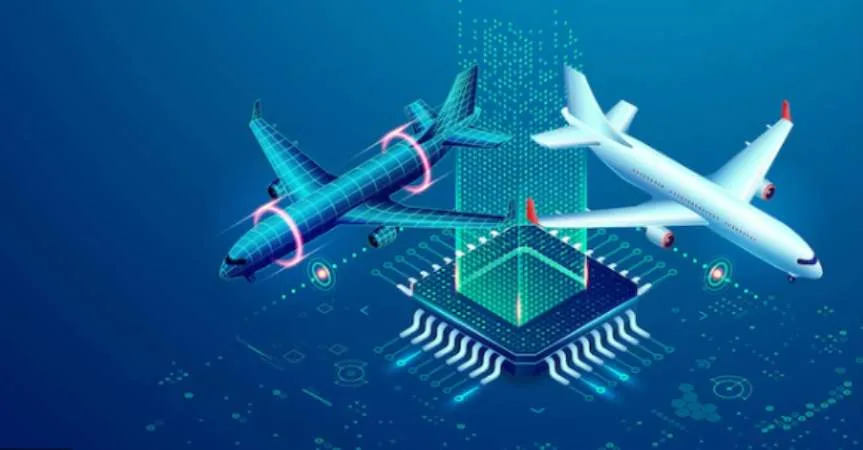The role of technology in aviation is growing at an unprecedented rate. As global demand for air travel continues to increase, so does the demand for pilots, mechanics, and other relevant jobs in the field. In fact, the International Society of Avigation projects that the global pilot population will decrease by 20% from 2025 to 2030.
This shortage has led many universities and secondary schools to begin offering “aviation technology” classes in order to prepare a new generation of candidates with relevant skillsets. In this blog post, we’ll explore the growing role of technology within aviation as well as some emerging technologies that show great potential within the field moving forward.
What is the Role of Technology in Aviation?
Aviation is certainly not a new field. In fact, the industry has a very long history. However, as with every other industry, technology has played a key role in changing the way things are done.
The use of technology in aviation has become a necessity. It has allowed the industry to grow in ways it was never previously capable of. The ability to collect and analyze data more efficiently has allowed airlines to better understand their customer base, improve customer experience, and increase revenue.
The same can be said for airports and the aviation sector as a whole. The use of data is only expected to increase as technology continues to advance, allowing the aviation sector to grow and thrive.
More Data, Better Real-time Feeds, and Coaching Software
The aviation industry is rapidly moving toward a data-driven culture. This is evident in the way many airlines are now handling training. More and more airlines are now investing in simulation training software for pilots. This software allows pilots to “practice” certain scenarios that may otherwise be dangerous to perform during the flight.
The increased reliance on data within aviation has also led to improvements in real-time feeds. One example of this is the implementation of ADS-B. ADS-B is a technology that uses sensors on airplanes and ground stations to monitor airplanes and provide pilots with real-time flight data. This data is then sent to air traffic control. Similarly, modern flight tracking apps have also led to a more frequent sharing of information, which can help in the event of an emergency.
Remote Piloting and Robotic Process Automation
Piloting an aircraft is certainly not a task that can be fully automated. However, there is much potential for remote piloting, which involves an aircraft being flown remotely by an individual located elsewhere. Remote piloting is already used in many industries and is permitted in certain commercial applications. However, working within aviation presents a few challenges.
The main challenge is that significant parts of the flight are inaccessible to the remote pilot. Remote piloting requires that a pilot in the cockpit be able to see the same things as the remote pilot. This can be done with heads-up display technology that projects information onto aircraft windshields. Remote piloting is still a relatively new concept and has yet to be fully implemented.
Many are optimistic as to its potential. The potential for robotic process automation (RPA) is also high within aviation. RPA can be used to automate certain processes and remove human error.
Wideband Communications and Ultra-high Frequency Band
Communication is a key element in aviation. The ability to communicate between different departments, companies, and authorities is essential. Communications are mostly done through radio frequency communications. This is a relatively old technology that has recently started to be replaced by wideband communications.
Wideband communications is a digital technology that transmits information over a very large bandwidth. This allows for high-quality communications, which can be very important in the aviation industry. Wideband communications is already being used by air traffic control towers and airliners. However, it is expected to be further implemented across the industry in the near future.
There has also been research into creating a new ultra-high frequency band for aviation. The main purpose of this band is to allow aircraft to more easily communicate with one another, particularly in areas with a high volume of air traffic.
Blockchain for Safety and Security
The aviation industry has certainly dealt with its fair share of security threats. From 9/11 to the recent disappearance of Malaysian Airlines flight MH370, there have certainly been some worrying incidents.
Unfortunately, it is difficult to entirely eliminate the possibility of threats and security breaches. However, blockchain technology is being looked at as a potential solution. Blockchain has gained popularity as a secure means of storing and transferring data. Many are hopeful that it will help to secure the aviation industry and reduce the risk of threats.
Conclusion
The aviation industry is growing rapidly as demand for air travel increases. This has led to an increased demand for pilots, mechanics, and other jobs within the field. As technology continues to advance, aviation companies are finding new ways to use this technology to their advantage. Many of these advancements will help to improve communication, data analysis, and pilot training. However, there is plenty of potential for further advancements in the future.







